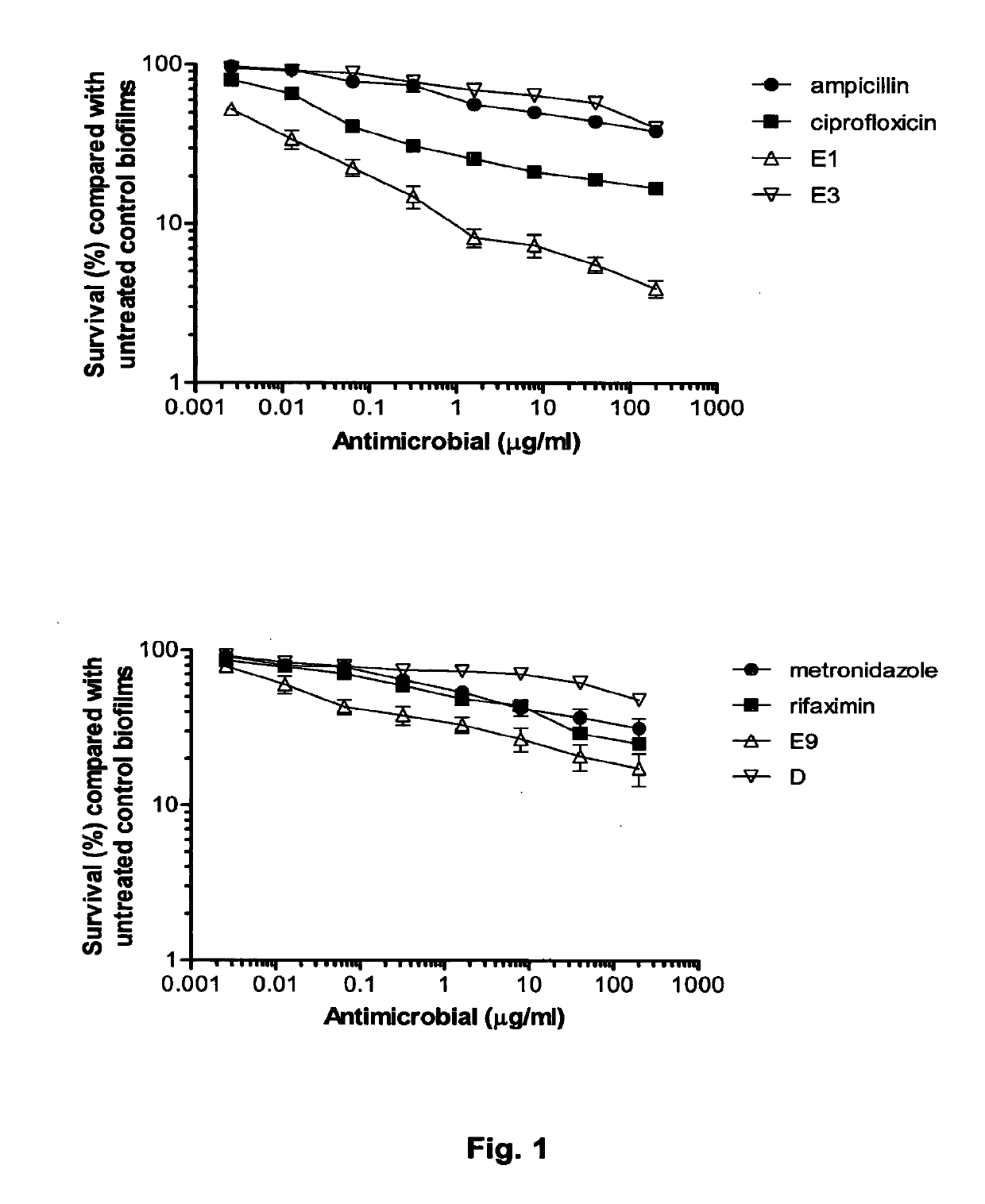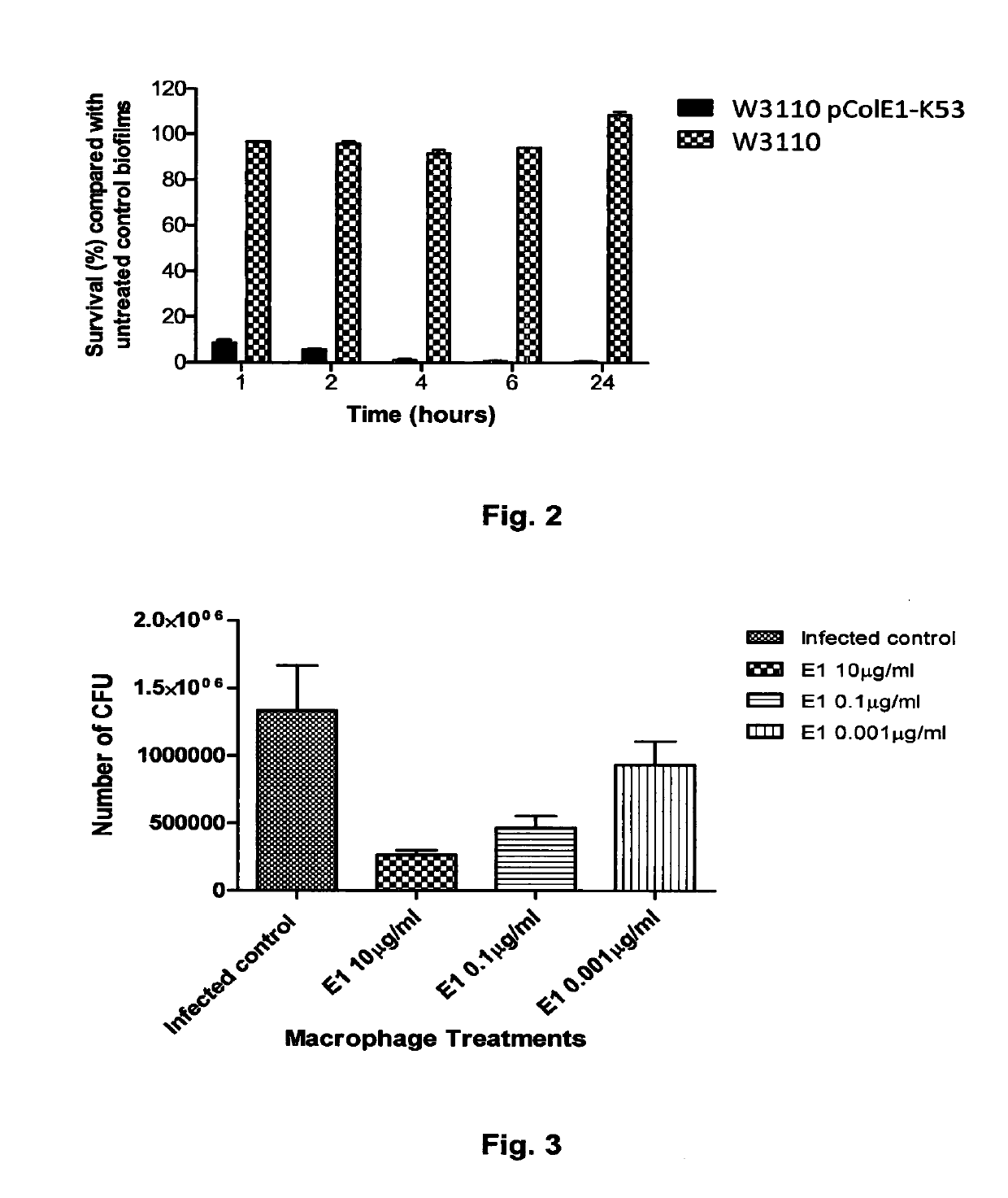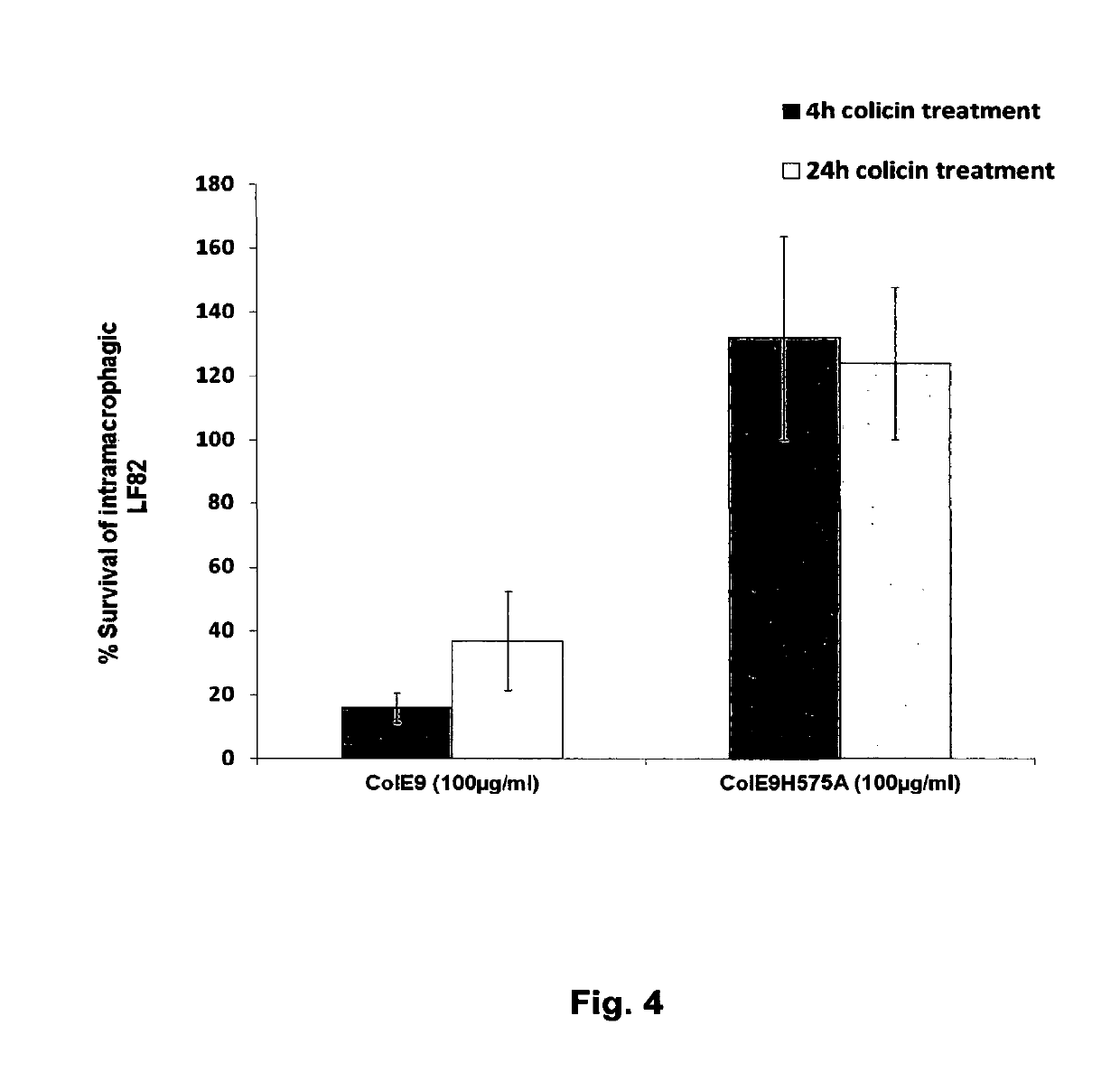Colicins for treating bacterial infections
- Summary
- Abstract
- Description
- Claims
- Application Information
AI Technical Summary
Benefits of technology
Problems solved by technology
Method used
Image
Examples
example 1
[0071]Activity of colicins against AI E. coli
[0072]Four adherent invasive E. coli isolates (AIEC) recovered from patients with Crohns' disease (isolates 95, 419, 615 and the AIEC type strain LF82) were shown to be sensitive to colicins E1, E3, E9 and D in spot tests, where purified colicin is spotted onto a growing lawn of cells.
[0073]Briefly, 25 μl of a log phase bacterial culture (OD600=0.6) was added to 5 ml of molten 0.8% agarose and poured on top of an LB agar plate. A 2 μl drop of each colicin (0.2 mg / ml) was spotted onto the overlay plate. The plates were incubated for 18 h and examined for zones of inhibition. All E. coli isolates tested were sensitive to the cytotoxic activity of the four colicin proteins, as indicated by the presence of clear zones representing cell killing (not shown).
example 2
[0074]The Activity of a Colicin E1-Producing Strain Against AIEC Biofilms
[0075]The clinically relevant state for AI E. coli in the infected gut mucosa is the biofilm state in which bacteria show enhanced tolerance to antibiotics. We therefore tested the ability of colicins to kill AI E. coli in the biofilm state using the MBEC Physiology and Genetics Assay (Innovotech). In this assay, biofilm growth occurs on 96 identical pegs protruding from the lid of a 96-well microtitre plate. Biofilm formation was demonstrated using electron microscopy (not shown).
[0076]To determine the cytotoxicity of colicins against LF82 biofilms we compared the % cell survival of AIEC in biofilms treated with colicins with those exposed to antibiotics which are frequently prescribed in the treatment of Crohn's disease (FIG. 1). Biofilms were formed on the MBEC™ 96-peg plate platform for 24 h, then challenged for 1 h with 150 μl dilutions of the antibiotics (ampicillin, ciprofloxacin, metronidazole and rifax...
example 3
[0078]The Activity of a Colicin E1 Producing Strain Against AIEC Biofilms
[0079]We envisage that colicins could be delivered in the form of a colicin producing bacterial strain. To determine if the addition of a colicin producing E. coli strain to LF82 resulted in killing of biofilm associated bacteria we added E.coli K-12 W3110 carrying the colicin El plasmid pColEl-K53 to 24 hour LF82 biofilms.
[0080]Biofilms of the LF82 strain were formed for 24 h on the MBEC™ 96-peg plate platform. A 150 μl culture volume of W3110 pColE1-K53 was also grown in the wells of a 96-well flat-bottom plate in LB broth supplemented with a sub-inhibitory concentration of the antibiotic ciprofloxacin (0.001 μg / ml). Ciprofloxicin induces colicin production through activation of the SOS response to DNA damage. The antibiotic induces the expression of the colicin E1 protein in this E. coli K12 strain. The 24 h LF82 biofilms were exposed to the W3110 pColE1-K53 strain for 1, 2, 4, 6, and 24 h. The pegs with the...
PUM
| Property | Measurement | Unit |
|---|---|---|
| sub-inhibitory concentration | aaaaa | aaaaa |
| molecular mass | aaaaa | aaaaa |
| environmental stress | aaaaa | aaaaa |
Abstract
Description
Claims
Application Information
 Login to View More
Login to View More - R&D
- Intellectual Property
- Life Sciences
- Materials
- Tech Scout
- Unparalleled Data Quality
- Higher Quality Content
- 60% Fewer Hallucinations
Browse by: Latest US Patents, China's latest patents, Technical Efficacy Thesaurus, Application Domain, Technology Topic, Popular Technical Reports.
© 2025 PatSnap. All rights reserved.Legal|Privacy policy|Modern Slavery Act Transparency Statement|Sitemap|About US| Contact US: help@patsnap.com



